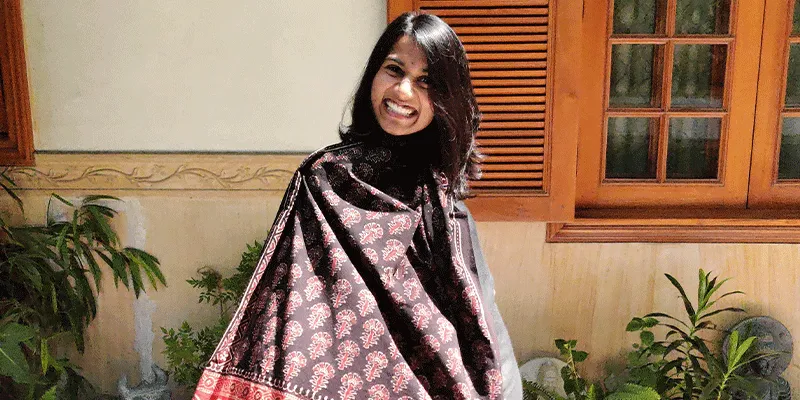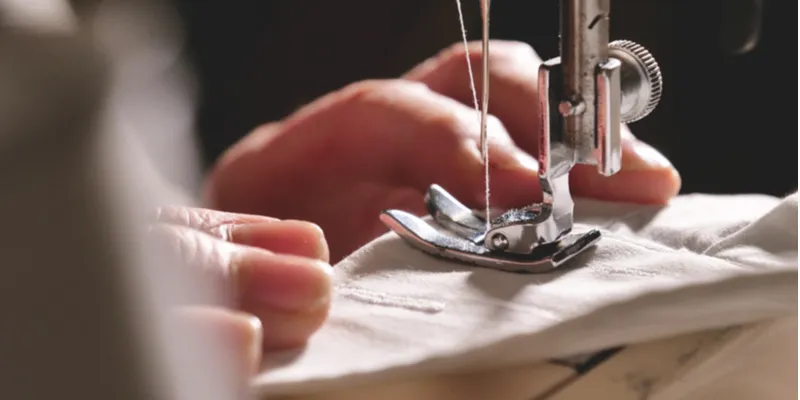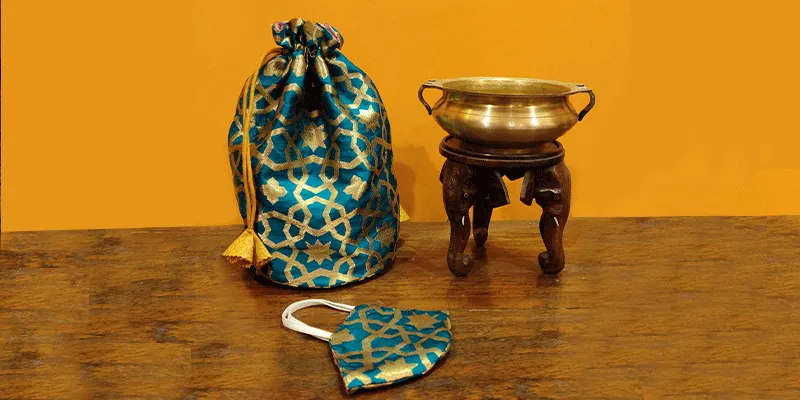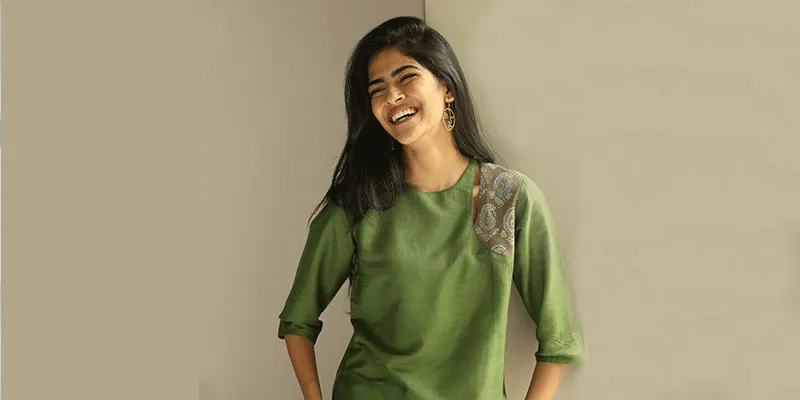Let's save the planet: Decoding the concept of sustainable fashion
Sustainable fashion is the need of the hour, and more and more fashion designers are working on green collections nowadays. Here are some of the eco-friendly and sustainable trends followed by the fashion fraternity…
Sustainability is the buzzword in Indian fashion these days, both globally as well as in India. We see a gamut of initiatives under the umbrella of sustainable fashion.

A model wears a hand block printed Ajrakh dupatta
Some homegrown brands are working exclusively on sustainable collections, whereas large international fashion houses are launching ‘green’ collections as a subset of their overall product offerings.
What is sustainable fashion
What does sustainability really mean? Is it using recycled raw materials, using plastic-free packaging, or going zero waste?

Sustainable fashion is all this and so much more. The term itself refers to a fundamental shift in the way our society perceives production and consumption— by moving away from a linear mindset of use and throw, to a circular one which leads to regeneration of resources.
For the fashion industry, it means moving away from fast fashion - which is characterised by the overproduction of cheap clothes which often end up in the landfill.
The need for slow fashion

Slow fashion is the need of the hour
Slow fashion is the need of the hour wherein brands produce thoughtfully designed, high quality clothes using non-polluting raw materials and zero waste production facilities.
However, its environmental benefits notwithstanding, sustainable fashion has often been typecast as ‘boring’ due to a popular myth that sustainable brands stick to earthy, neutral colors and loose silhouettes.
Furthermore, using non-polluting raw materials is not always economical - a meter of organic cotton or hemp fabric is more than double, if not triple, the cost of conventionally produced cotton.
These challenges raise the question - can sustainable fashion be fun and economically priced at a large scale, or is it a luxury limited to an elite audience?
Craft traditions

'Pataka' potli made of surplus rayon brocade
India’s rich craft traditions offer a solution to producing sustainably at a modest cost. Many Indian crafts have evolved in local communities over generations and are both resource-efficient and in-sync with local ecosystems. For instance, kala cotton, traditionally grown in the Kutch region of Gujarat, is cultivated without any pesticides and requires minimal water.
This is a great option for water-stressed regions in the country. Another compelling example of a sustainable craft is Ajrakh. This technique of hand block printing typically involves using natural dyes - thereby preventing toxic synthetic byproducts from entering our waterways, harming natural ecosystems and causing health risks for local communities.
Crafts such as Kutchi weaving and Ajrakh prints have been associated with beautiful age-old motifs that are typically found on sarees and dupattas.
These motifs could also be combined with a contemporary sensibility to create garments that are appealing to a wide range of consumers today. Artisans are recognising this now. With an increase in mobile penetration, artisans are opting to go online, connecting with market needs and responding to them with newer products and newer motifs as well.
Protect the artisans
Today, millennials and GenZ consumers are ecologically conscious. They are looking to associate themselves with brands that align with their values.

A model poses in an eco-friendly Ajrakh top
With the rising interest in eco-fashion and widespread support of the Vocal for Local campaign, brands have an opportunity to move to more sustainable practices that cater to this segment, all while promoting Indian crafts. It is critically important then, that brands promote not just the craft, but also the well-being of crafts persons.
Many brands still follow conventional supply chains and source materials from secondary or tertiary markets without much traceability. Thus, a garment may cost Rs 1,500 but the artisan or tailor (often a woman from a marginalised community) gets no more than Rs 100 for her work.
It is imperative for the industry to break out of this supply chain - a garment made through the exploitation of labour can never be truly sustainable, no matter how clean the raw materials are.
Let’s preserve our heritage
For the sake of the planet and future generations, there is a clear need to move beyond fast fashion and the linear model of consumption. Buying responsibly and using thoughtfully is a step forward from the status quo.
However, that doesn’t mean letting go of self-expression and creativity associated with fashion. There are many ways to approach sustainable fashion and craft is one that supports livelihoods and preserves India’s rich heritage.
(Images credit: Tamarind Chutney and Shutterstock)
Edited by Asha Chowdary
(Disclaimer: The views and opinions expressed in this article are those of the author and do not necessarily reflect the views of YourStory.)








